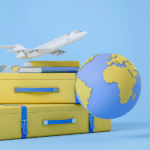The world is becoming increasingly interconnected, and the need to communicate across languages is more vital than ever. Businesses collaborate with international partners, students research global topics, and travelers explore diverse cultures – all requiring the ability to bridge the language gap. This is where online document translation services come in, offering a convenient and cost-effective solution for translating essential documents.
However, navigating the world of online document translation can be overwhelming. With a variety of services available, each claiming superior results, choosing the right one can be a challenge. This guide will equip you with the knowledge to make informed decisions and achieve high-quality document translations.
Understanding the Options: Machine vs. Human
There are two main approaches to online document translation: machine translation (MT) and human translation.
- Machine Translation (MT): MT services leverage sophisticated algorithms to automatically translate text. These services are typically fast and affordable, making them suitable for basic documents where a general understanding suffices.
However, MT has limitations. Complex sentence structures, industry-specific terminology, and cultural nuances can often be misinterpreted by algorithms, resulting in inaccurate or unnatural-sounding translations.
- Human Translation: Human translators possess the knowledge and expertise to produce accurate, natural-flowing translations. They understand the intricacies of language, including cultural references and idiomatic expressions, ensuring a more professional and culturally appropriate translation.
While human translation offers superior results, it generally comes with a higher cost and longer turnaround time compared to MT.
Finding the Ideal Fit: Matching Your Needs to the Service
The ideal online document translation service depends on your specific requirements. Here are some key factors to consider:
- Document Complexity: For straightforward documents with basic language or a focus on general understanding, MT services may suffice. However, complex documents containing technical jargon or legal terms require the accuracy and nuance of human translation.
- Accuracy Requirements: If absolute accuracy is paramount, human translation is the clear choice. Documents like legal contracts, medical reports, or financial statements demand flawless translations to avoid misinterpretations.
- Budget: MT services are generally the cost-effective option, while human translation can be more expensive. Consider your budget constraints and the importance of the document to determine the ideal fit.
- Turnaround Time: MT services typically offer the fastest turnaround times, while human translations might take longer depending on the project complexity.
Beyond MT and Human Translation: The Hybrid Approach
A growing trend in online document translation is the hybrid approach. This method combines the speed of MT with the accuracy of human editing. The document is first translated by an MT engine, followed by a meticulous review and revision by a professional human translator.
The hybrid approach offers a balance between cost, speed, and accuracy. It works well for documents requiring a high level of quality but where turnaround time and budget are also considerations.
Doctranslator.com: A User-Friendly Solution
For those seeking a user-friendly online document translation platform with both machine and human options, Doctranslator.com is a valuable resource. This platform allows you to upload documents in various formats and choose from a wide range of languages. Doctranslator.com leverages a combination of powerful MT technology and human editing expertise, aiming to deliver high-quality translations while maintaining the original layout of your document.
Maximizing Your Online Document Translation Experience
Here are some additional tips to ensure a successful online document translation experience:
- Proofread your document thoroughly before submitting it for translation. This helps the translator work with a clean and accurate source text.
- Provide context and background information. The more information you furnish about the document’s purpose and target audience, the better the translator can tailor the translation for maximum impact.
- Clearly outline your expectations. Specify the desired level of formality, tone, and accuracy to ensure the translated document aligns with your needs.
- Proofread the translated document. Even human translations can contain errors. Review the translation carefully to identify any inconsistencies or inaccuracies.
By following these strategies and carefully considering your options, you can leverage online document translation services to effectively bridge language barriers and ensure clear communication across cultures.
Published by: Nelly Chavez



















